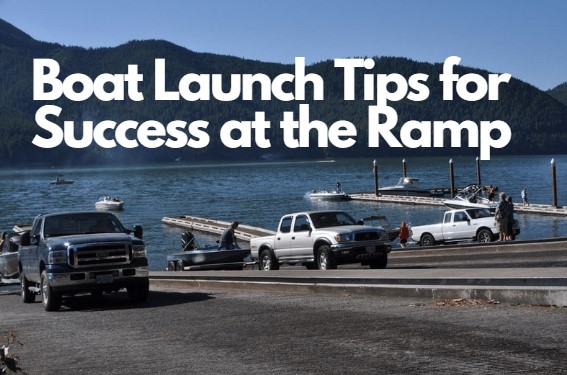
Every boat owner has a story about trying to dock at a waterfront restaurant, or a slip, or even the dock at the boat ramp while a crowd watches, often times shouting suggestions and critiques. If it hasn’t happened to you yet, it will. Backing a trailer down a ramp at your favorite lake for the first time on a busy weekend provides similar stories. Everyone who’s done this says with experience comes confidence.
BoatU.S. Trailering spoke with two seasoned trailer veterans who teach seminars for first time boaters, and trailer backers. Betty Bauman, founder of Ladies Let’s Go Fishing, leads classes for women in the Ft. Lauderdale area. Tony Dippolito of Magic Tilt Trailers teaches trailer backing as well. Here are their suggestions. Experienced boaters are welcome to read and learn something too!

- First of all, take your boat and trailer to an empty shopping center parking lot and practice backing the trailer into a parking space.
- Bauman says an often overlooked part of trailer backing is agreeing on a few common hand signals. She notes, from 15 years of teaching this to women throughout Florida that boat ramps can be noisy and too many times a verbal directions can’t be heard over the roar of cigarette boats, car stereos, and tow vehicle engines. So have a discussion about what she calls “a common language,” Know how to indicate “stop,” “left,” “start over,” and of course, “perfect” with your hands.
- The most important lesson for the beginner is to go SLOW. The faster you go, typically the further behind you get. There are no time limits for launching. Most ramps are public and everyone has a right to be there, even the slower ones. For the beginner, the majority of vehicle movement at the ramp should be controlled at the brake pedal.
- As you’re backing down a sloped ramp, very little gas pedal is required. Bumping the brake pedal and checking where you are in relation to the ramp are keys to success. Also, all adjustments are best made by the beginner with the brake applied; turn the wheel to get the trailer to go where you want and then release the brake. This gives you optimum maneuverability in the shortest distance.
- When we’re taught to drive, we’re taught to keep our hands near the top of the wheel. This can be confusing for trailer backing as there is no left/right relationship this way. If you start with your hands at the bottom of the wheel, you can establish a left/right relationship for trailer backing.
- Focus on the task at hand, not the surroundings (other people waiting). This will get you onto the ramp much quicker.
- The relationship between the tow vehicle and the boat is different for every combination. A longer trailer is easier to back up and harder in turns going forward. A shorter trailer is harder to back up as it jackknifes quicker but is easier to tow going forward.
- When you find yourself with the trailer jackknifed, there is a proper way to correct the situation. With your foot on the brake, turn the steering wheel all the way in the opposite direction of the jackknife. If the trailer is jackknifed to the right side of the vehicle, with your foot on the brake, turn the wheel all the way to the left as if making a left turn. Then slowly release the brakes and pull forward only as far as is required to align the tow vehicle and the trailer. Remember though, sometimes it’s easier to start over at the top of the ramp.
- All beginners should have guide poles on the trailer for a visual reference; this is a necessity. Without guides, it is extremely difficult to see an empty trailer. Some people back up using mirrors, some look over their shoulders. There is no right or wrong way. Whichever way is most comfortable for the individual is the best way.
- The difference between a novice and a professional is the number of times the professional has done it. Get out and practice.
Original Post courtesy of BoatU.S. and DiscoverBoating.com.
Re-posted by Scott Freerksen “The Lake Guy”
